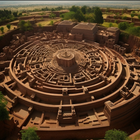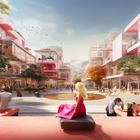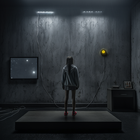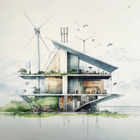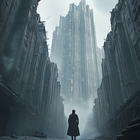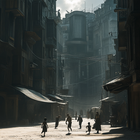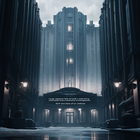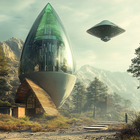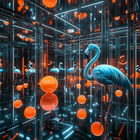AI-Supported Speculative Space Production Workshop I
The AI-Assisted Speculative Space Workshop was conducted as a two-week Research Internship at Özyeğin University during the 2022-2023 summer term. The workshop participants included two co-instructors and thirteen architecture students.
The core objective of the workshop was to encourage students to imagine and represent cities and spaces found in utopian and dystopian literature through written, verbal, and visual means, and to materialize these visions with the support of AI tools. Throughout the process, we prioritized maintaining the central role of the human designer, encouraging students to engage with diverse representation techniques. Sketching, writing, and critical discussion were established as the fundamental practices of the workshop.




Utopia Thomas More (1516)
The City of the Sun Tommaso Campanella (1602)
New Atlantis Francis Bacon (1626)
Herland Charlotte Perkins Gilman (1915)
We Yevgeni Zamyatin (1921)
Brave New World Aldous Huxley (1932)
1984 George Orwell (1949)
Island Aldous Huxley (1962)
The Clockwork Orange Anthony Burgess (1962)
The Unpossessed - Anarres Ursula K. Le Guin (1974)
The Unpossessed - Urras Ursula K. Le Guin (1974)
The Spaces of Hope David Harvey (2000)
AI-Supported Speculative Space Production Workshop II
In the workshop, the architectural and urban imaginaries of utopias and dystopias were explored through a continuous and iterative process of textual, verbal, and visual representation, supported by AI tools. This process consisted of a five-stage sequence of activities: reading and discussing a utopia or dystopia, expressing spatial characteristics through sketches and texts, rewriting the scenario and creating a storyboard, generating selected sequences with artificial intelligence (using Midjourney), and finally, assembling these sequences. As a result, beyond gaining experience in interacting with AI, we produced visual and textual narratives (storyboards). This book brings together the sequences generated with Midjourney and the related stories created by participants.


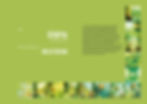

The first story was created by Emirhan Akman, inspired by David Harvey’s Spaces of Hope. It focuses on the utopian setting described in the final chapter of the book, “Edilia.” Emirhan’s narrative explores how modern urban life isolates individuals and exacerbates social alienation. The main character, reflecting on the past and present, realizes how once vibrant and solidaristic cities have transformed into “cold” and “lonely” spaces. However, guided by a silhouette, they witness a vision of an ideal city—one where people are closer to one another and social bonds are strong. The story provokes reflection on the alienating structure of cities and the necessity of intervention, questioning what constitutes the “most ideal” urban and societal order.
The second story, written by Melis Özağaç, is set on the planet Anarres from Ursula K. Le Guin’s The Dispossessed. The characters navigate the harsh and isolated environment of Anarres, grappling with loneliness while exploring social bonds and the search for individual meaning. The balance between scientific pursuits and personal relationships becomes a struggle for finding purpose within the planet’s challenging conditions. The narrative questions how people connect within Anarres’ libertarian yet demanding way of life.
The third story, created by Melis Özkan, follows an adventure set in Thomas More’s Utopia. Through the dreams and discoveries of young Mell, the story contrasts Utopia’s orderly and peaceful social structure with the pursuit of individual creativity and freedom. Growing up in Utopia’s symmetrical and regulated world, Mell contributes to society by working in technologically advanced agricultural greenhouses. However, their creative aspirations and dreams gradually set them apart from their family and community. As Mell begins working on personal inventions, they dream of building a flying island-home and embarking on explorations. The story traces the tension between individual freedom, creativity, and the rigid perfection of Utopia’s social order.
The fourth story was written by Özgür Paksoy. Unlike the other participants, Özgür did not reference an existing utopian narrative but instead imagined and depicted their own worlds. Özgür’s storytelling approach resembles Italo Calvino’s Invisible Cities, as they describe six independent regions within the realm of Taorgo.

Each story encourages reflections on places that do not exist. The use of AI tools like Midjourney has materialized these imagined worlds, offering new perspectives and making speculative visions more tangible. This process has expanded both individual and collective capacities for thinking and discovery.
We extend our gratitude to all participants for their valuable contributions.












